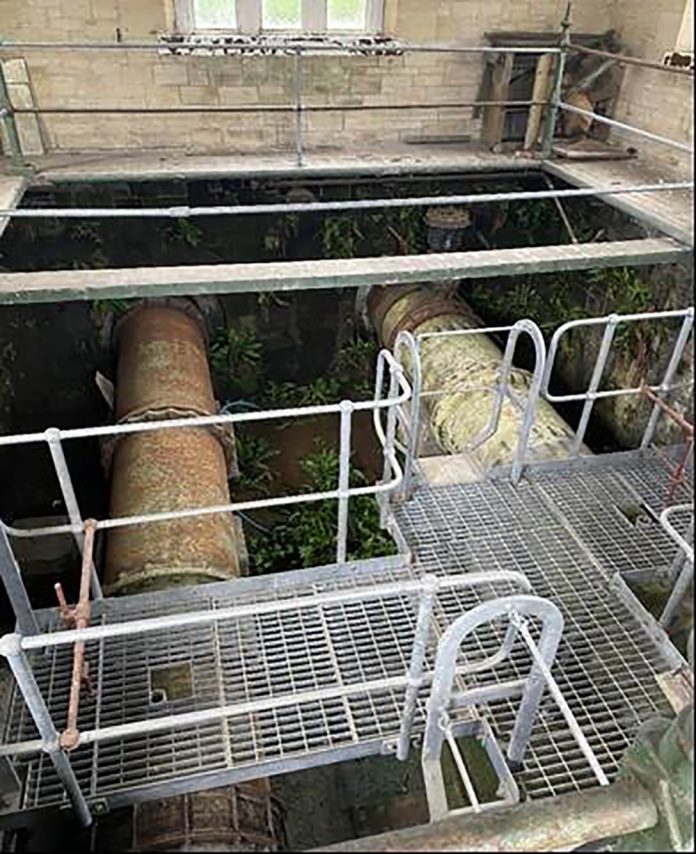By Martin Duff, Business Development Director (Water), Atmos International
Pipelines typically aren’t considered in asset maintenance programs despite being the most essential method of transporting water.1
A significant portion of the UK water pipeline network is also aging, buried underground and typically more prone to leakage than in other sectors, with Ofwat estimating that over 20% of all UK potable water running through pipes is lost to leakage.2
While some leakage is a reluctantly accepted trait in clean water pipelines, leakage anywhere along a water pipeline can still have severe impacts for customers, surrounding areas and water utilities themselves. Additionally, leakage in wastewater pipelines has a far more serious environmental impact.
Clean water pipelines
With a high number of people in residential areas being reliant on the supply of drinking water, small leaks account for a large overall leakage figure, and small leaks can lead to pipe bursts, which cause supply interruptions. Poor leakage and water supply interruption performance can result in large fines for the water utilities.
Wastewater pipelines
For wastewater pipeline networks, rising sewer mains are prone to large bursts that can cause pollution incidents in the environment. Wastewater is a hazardous substance, so a leak of any size can endanger public health and the environment, resulting in heavy fines for the water utility.
Recognizing the importance of asset health in water pipelines
Health is wealth. Only when the asset health of water pipelines is recognized can supply interruptions be reduced and fines for water utilities be kept to a minimum. Multiple pipeline leak detection methods can be used to monitor and improve asset health.
Noise correlation
This method of pipeline leak detection uses acoustic sensors that listen for the sound of existing leaks in the pipeline.
Flow balance
Upstream and downstream flow can be measured and compared to detect existing leaks in a water pipeline network as well as new leaks forming over a longer period of time by interrogating discrepancies in the readings.
Pressure distribution analysis
Using multiple pressure sensors across a pipeline network means small discrepancies in pressure can indicate the presence of background leakage.
Negative pressure wave
When a new leak forms on a pipeline, a negative pressure wave propagates in both directions along the pipeline, travelling at approximately the speed of sound. Using sensitive pressure sensors, the leak can be identified and an accurate location estimated within minutes after it occurs.
Using leak detection methods to monitor the asset health of water pipelines can only be effective when they make maximum use of the data available.
High resolution data
To effectively monitor the asset health of UK water pipelines, high resolution data can be used to detect leaks or thefts that would otherwise go unnoticed.
Many areas of the water and wastewater networks do not have any instrumentation to collect pressure or flow data, so new leaks cannot be identified as they are forming. Where existing pressure or flow instrumentation does exist, they typically acquire data at low resolutions such as at one minute or 15 minute intervals, meaning negative pressure waves and transient data will not typically be captured. The pressure, flow and acoustic data collected by Atmos’ range of hardware instrumentation has a multi-millisecond sampling interval, and the Atmos Wave Flow software uses advanced signal processing algorithms to see deeper along the pipeline network to achieve accurate leak detection.
Monitoring asset health starts with reliable leak detection
With aging water pipelines being buried underground, and underinvestment in their maintenance, this range of factors already places the UK water pipeline network at risk of leakage, so leak detection has never been more important.
Since 1995 Atmos has been addressing the challenges faced by the oil, gas and chemical industries, with our technology being successfully applied to over 1,500 pipelines across more than 60 countries.
This experience has driven our innovation to help the water industry meet the ambitious performance commitments that they face.
To learn more about how we support the UK water industry, view our solutions.
References
1 www.atmosi.com/en/news-events/in-the-media/water-magazine-recognizing-water-pipelines-as-assets/
2 www.ofwat.gov.uk/leakage-in-the-water-industry/



